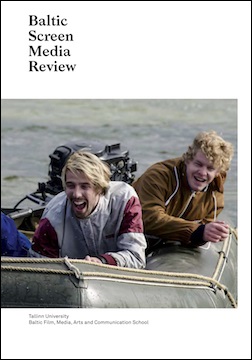Painful Neutrality: Screening the Extradition of the Balts from Sweden
Painful Neutrality: Screening the Extradition of the Balts from Sweden
Author(s): Lars Kristensen, Christo BurmanSubject(s): Studies of Literature, Military history, Novel, Fascism, Nazism and WW II, Film / Cinema / Cinematography, Sociology of Art, History of Art
Published by: Tallinna Ülikooli Balti Filmi- ja Meediakool
Keywords: Per Olov Enquist; Swedish literature; novel; Johan Bergenstråhle; Swedish cinematography; film; extradition of Baltic soldiers; World War II;
Summary/Abstract: The article deals with the extradition of Baltic soldiers from Sweden in 1946 as represented in Per Olov Enquist’s novel The Legionnaires: A Documentary Novel (Legionärerna. En roman om baltutlämningen, 1968) and Johan Bergenstråhle’s film A Baltic Tragedy (Baltutlämningen. En film om ett politiskt beslut Sverige 1945, Sweden, 1970). The theoretical framework is taken from trauma studies and its equivalent within film studies, where trauma is seen as a repeated occurrence of a past event. In this regard, literature and moving images become the means of reaching the traumatic event, a way to relive it. What separates the extradition of the Baltic soldiers from other traumas, such as the Holocaust, is that it functions as a guilt complex related to the failure to prevent the tragedy, which is connected to Sweden’s position of neutrality during World War II and the appeasement of all the warring nations. It is argued that this is a collective trauma created by Enquist’s novel, which blew it into national proportions. However, Bergenstråhle’s film changes the focus of the trauma by downplaying the bad conscience of the Swedes. In this way, the film aims to create new witnesses to the extradition affair. The analysis looks at the reception of both the novel and film in order to explain the two different approaches to the historical event, as well as the two different time periods in which they were produced. The authors argue that the two years that separate the appearance of the novel and the film explain the swing undergone by the political mood of the late 1960s towards a deflated revolution of the early 1970s, when the film arrived on screens nationwide. However, in terms of creating witnesses to the traumatic event, the book and film manage to stir public opinion to the extent that the trauma changes from being slowly effacing to being collectively ‘experienced’ through remembrance. The paradox is that, while the novel still functions as a vivid reminder of the painful aftermath caused by Swedish neutrality during World War II, the film is almost completely forgotten today. The film’s mode of attacking the viewers with an I-witness account, the juxtaposition and misconduct led to a rejection of the narrative by Swedish audiences.
Journal: Baltic Screen Media Review
- Issue Year: 2018
- Issue No: 6
- Page Range: 72-92
- Page Count: 21
- Language: English

